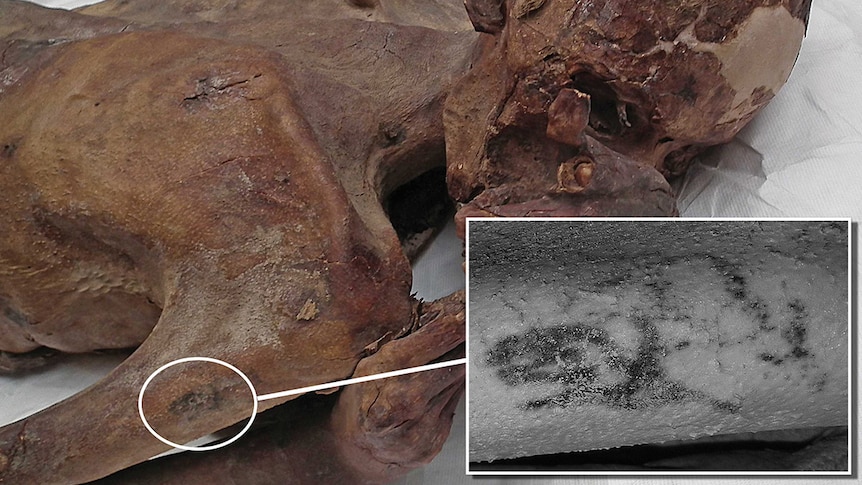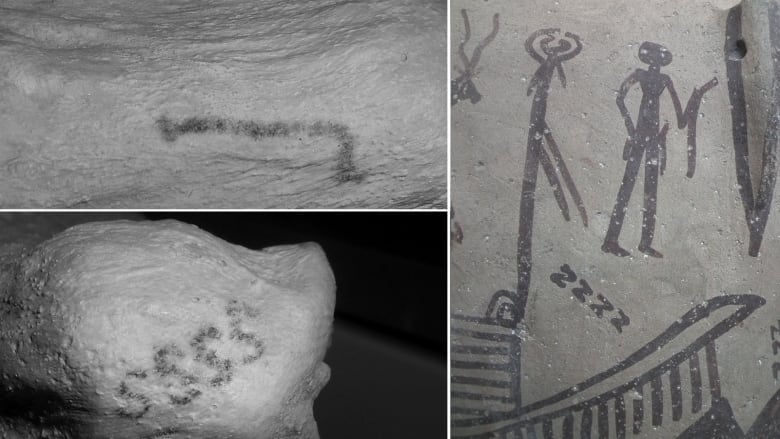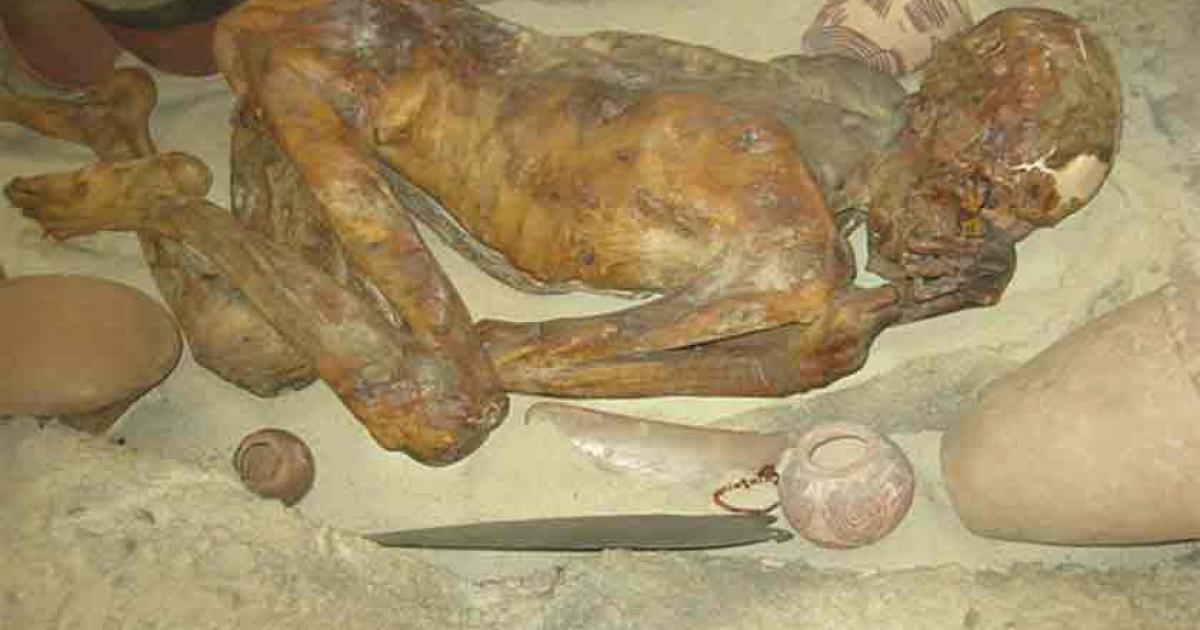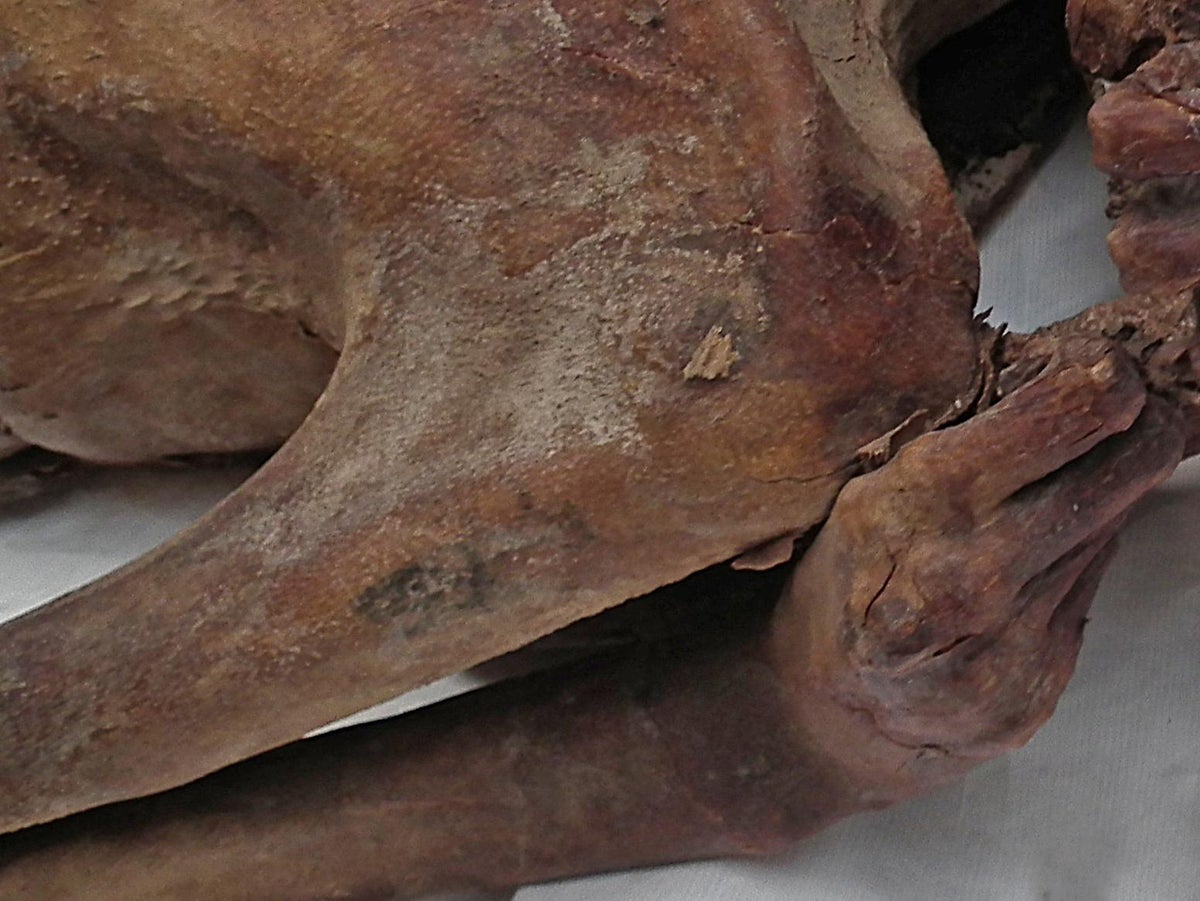The Discovery and Significance of the Tattoos
What makes the Gebelein Man truly exceptional is his tattoos. He is one of the earliest known individuals to have been inked, providing a fascinating peek into the history of body art. The CT scans and infrared imaging used to study his remains revealed two distinct tattooed figures on his upper right arm: a bull and a Barbary sheep. This discovery is monumental for several reasons.

For one, it reveals the symbolic significance of tattoos in early Egyptian society. While tattoos are now a recognized part of many ancient cultures, their role in Egypt was previously misunderstood. It was long believed that tattoos were primarily a feminine practice in ancient Egypt, but the Gebelein Man challenges this assumption. As the first male mummy with distinguishable tattoos, he adds a new layer of understanding to the role of tattoos, which may have carried spiritual, protective, or social meanings. In fact, tattoos could have been linked to rites of passage, social status, or personal identity.
A Violent End: The Tragic Fate of the Gebelein Man
The study of the Gebelein Man extends beyond his tattoos and offers even more intrigue. CT scans of his remains revealed that he was a young man, between 18 and 21 years old, at the time of his death. Tragically, he met a violent end. X-rays revealed that he had been stabbed in the back just above his left shoulder blade, with his shoulder blade shattered, as well as fractures to his third and fourth ribs on the left side of his chest. This marks the Gebelein Man not only as an early example of Egyptian life but also as a victim of violence—offering a rare insight into the darker aspects of ancient society.

Early Egyptian Mummification Practices
In addition to these findings, the Gebelein Man provides valuable information about Pre-Dynastic Egyptian burial customs. Unlike the highly sophisticated mummification techniques developed during the Dynastic period, Pre-Dynastic Egyptians practiced a form of natural mummification. The Gebelein Man was buried in an oval pit grave, and the dry desert climate did the work of preserving his body over thousands of years. This natural form of preservation predates the complex embalming practices that became synonymous with ancient Egyptian mummification, offering important clues to the early stages of Egyptian funerary customs.

The Impact of Modern Technology
The incredible revelations about the Gebelein Man would not have been possible without the advancement of modern technology. Techniques such as infrared imaging, CT scanning, and even DNA analysis have allowed scientists to uncover the most minute details of this ancient mummy. What was once thought to be a simple smudge on his arm is now recognized as a distinguishable tattoo—one of the earliest known instances of tattooed art on a male body. These technologies are allowing us to explore ancient lives in ways that were unimaginable just a few decades ago.

Conclusion: Bridging the Past and Present
The Gebelein Man is more than just a mummy—he is a window into early Egyptian culture, a bridge between the past and the present, and a symbol of the growing power of modern technology in the field of archaeology. From the discovery of his tattoos, which challenge our assumptions about body art in ancient Egypt, to the tragic discovery of his violent death, the Gebelein Man continues to surprise and fascinate researchers. His story is not only one of personal identity and cultural expression but also a testament to the rich complexity of ancient Egyptian society.
Through the lens of modern scientific advancements, the Gebelein Man has become an important figure in our understanding of early Egyptian civilization. His tattoos, his violent demise, and his method of mummification all contribute to the ongoing exploration of life, death, and identity in one of the world’s oldest civilizations. As new discoveries continue to emerge, the Gebelein Man serves as a reminder of how much more there is to uncover in the sands of time.

